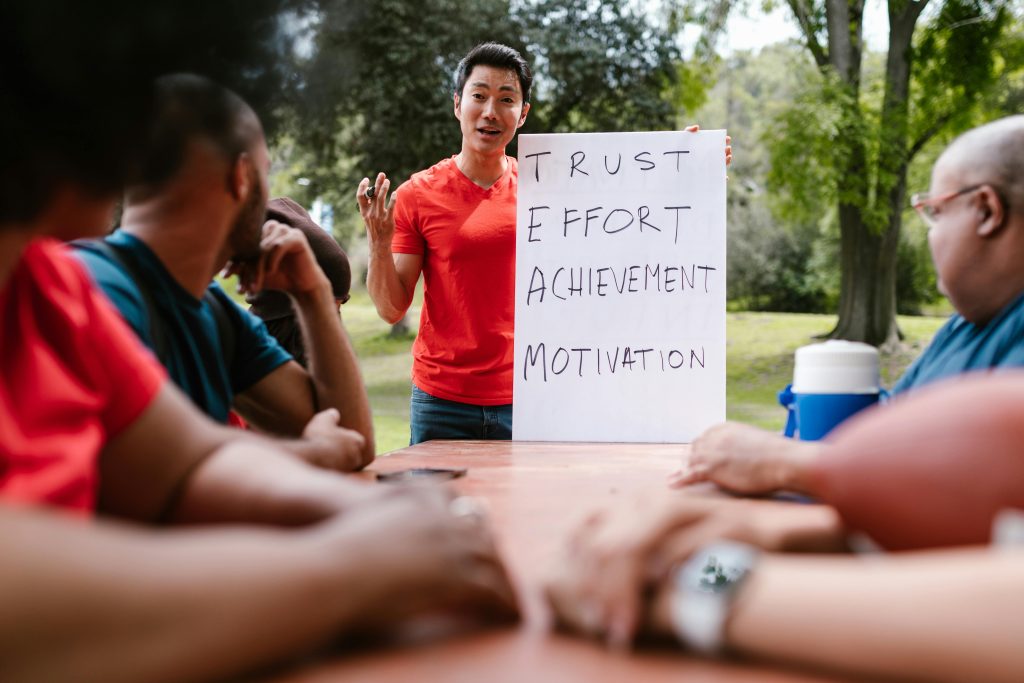The EPIC Leadership Model, based on the leadership principles of the Green Berets, is a transformative approach to leadership that transcends traditional frameworks. It is a guide to building and leading elite teams capable of extraordinary achievements, even in the most challenging conditions. Rooted in the principles of Purpose, Direction, Motivation, and Resources (PDMR) and in an atmosphere of Active or Fierce Trust, EPIC leadership offers a structured yet flexible framework for empowering leaders and aligning teams toward a shared vision of success.
Why EPIC Leadership Matters
EPIC (Empathetic, Purposeful, Inspirational, Character-driven) Leadership is a groundbreaking approach that transcends both traditional and contemporary leadership models, including servant leadership, empathetic leadership, and well-known academic theories. By integrating their strengths and addressing their limitations, EPIC Leadership creates a comprehensive framework uniquely suited to the complexities of modern leadership.
Empathetic Leadership vs. EPIC Leadership
Empathetic leadership emphasizes understanding and addressing the emotional needs of team members, which fosters a supportive and inclusive environment. However, its singular focus on emotional intelligence can sometimes dilute strategic direction or mission focus. EPIC Leadership incorporates empathy as part of Consideration (one of the 4C’s for building Active Trust), ensuring leaders understand and value their team members’ perspectives. But it goes further by aligning empathy with Purpose and Direction, ensuring that the emotional intelligence aspect contributes directly to achieving critical objectives. This synthesis allows EPIC Leadership to balance emotional connection with high-stakes performance demands.
Servant Leadership vs. EPIC Leadership
Servant leadership centers on serving the needs of the team above all else, prioritizing the growth and well-being of individuals. While this is admirable, it can sometimes overlook the importance of broader strategic goals, especially in dynamic, high-pressure environments. EPIC Leadership retains the people-focused aspect of servant leadership but aligns it with actionable goals through Motivation and Resources. Leaders in the EPIC model serve their teams not only by meeting their needs but also by equipping them to thrive and achieve extraordinary results. This alignment ensures that serving the team never comes at the expense of achieving the mission.
Traditional Models vs. EPIC Leadership
Traditional leadership models often fall into categories like transactional and transformational. Transactional leadership provides structure but can lack inspiration, while transformational leadership motivates but can overlook execution details. EPIC Leadership bridges these gaps by combining the clarity of transactional leadership with the vision of transformational leadership, integrating them with trust and empowerment. This ensures that teams are not only inspired but also equipped and autonomous, fostering both morale and efficiency.
EPIC Leadership and Academic Theories
EPIC Leadership builds upon existing academic theories, blending their insights into a practical and actionable framework:
- Path-Goal Theory: Leaders should adapt their style to fit the needs of their team and the environment. EPIC Leadership exemplifies this adaptability through its focus on Direction and Motivation, empowering leaders to respond dynamically to changing circumstances.
- Leader-Member Exchange (LMX) Theory: LMX focuses on the quality of relationships between leaders and followers. EPIC Leadership strengthens these relationships through Character and Communication, creating trust-based bonds that enhance collaboration.
- Servant Leadership: While servant leadership prioritizes team well-being, EPIC Leadership complements this with a strategic focus on results. It ensures that serving the team aligns with achieving organizational goals, making it more versatile in high-stakes settings.
- Contingency Theories: These theories highlight that no single leadership style is universally effective. EPIC Leadership integrates this flexibility, as demonstrated by its adaptability to diverse cultural and operational challenges, mirroring the Green Beret experience.
The Unique Value of EPIC Leadership
EPIC Leadership sets itself apart by bridging the gap between theory and practice. It combines emotional intelligence, strategic vision, and rigorous execution, offering a framework that works in any context, from corporate boardrooms to the battlefield. By focusing on Purpose, Direction, Motivation, and Resources, and fostering Active Trust through Character, Communication, Consideration, and Coaching, EPIC Leadership equips leaders to build teams that consistently achieve exceptional results.
In a world of increasing complexity, where leaders must navigate rapid change, EPIC Leadership provides the tools to inspire, adapt, and lead effectively. It stands as a holistic model that integrates the best elements of traditional, servant, and empathetic leadership styles, elevating them into a system designed for extraordinary outcomes.
The Four Pillars of EPIC Leadership: PDMR
The core of EPIC Leadership is the PDMR Model, which equips leaders with the critical elements to inspire and sustain high-performing teams by cultivating Endogenous Leadership®—a system where individuals lead themselves, functioning autonomously like “fire-and-forget” missiles, each executing their role with precision and accountability.
- Purpose: Purpose serves as the cornerstone of effective leadership. It represents the “why” behind every task, ensuring that team members understand the mission’s significance. Leaders instill purpose by clearly articulating goals and aligning them with the team’s values. This creates a sense of meaning that motivates individuals to commit wholeheartedly to the mission.
- Direction: Great leaders provide a clear path forward, offering strategic guidance that empowers their teams to navigate complex challenges. Direction involves not only planning and decision-making but also ensuring that everyone on the team understands their roles and how they contribute to the broader objective.
- Motivation: Motivation is the fuel that drives teams to persevere in the face of adversity. EPIC leaders cultivate intrinsic motivation by fostering trust, celebrating wins, and aligning individual goals with team objectives. The Green Beret philosophy emphasizes the importance of leading by example and inspiring others to achieve more than they thought possible.
- Resources: Resources encompass the tools, support, and infrastructure teams need to execute their tasks effectively. This includes not only tangible resources like equipment but also intangible ones, such as training, mentorship, and emotional support. EPIC leaders are adept at identifying and leveraging resources to empower their teams.
Building Trust Through the 4C’s
Active | Fierce Trust is a hallmark of EPIC leadership, cultivated through the 4C’s: Character, Communication, Consideration, and Coaching. These elements work together to create an environment where teams feel valued, understood, and empowered.
- Character: Integrity is non-negotiable in leadership. Green Beret leaders understand that trust begins with authenticity and is earned. Leaders who demonstrate strong character inspire their teams to follow not out of obligation but out of respect and admiration.
- Communication: Effective communication is the glue that holds teams together. The EPIC model emphasizes the importance of both listening and articulating ideas clearly. Green Berets, for instance, undergo rigorous language and cultural training to ensure they can build rapport and foster cooperation with diverse groups. Leaders in any field can learn from this approach by tailoring their communication styles to resonate with their audiences.
- Consideration: True leadership involves understanding and valuing the needs and perspectives of others. This requires empathy, cultural awareness, and a commitment to creating a supportive environment where every team member feels heard and respected.
- Coaching: EPIC leaders are not just managers but mentors. They invest in their teams’ development, providing guidance and feedback to help individuals grow personally and professionally. This aligns with the Green Beret philosophy of creating leaders who can carry the torch forward because there is no success without a successor.
Flipping the Leadership Pyramid
One of the most transformative aspects of EPIC leadership is its inversion of the traditional hierarchical pyramid. In this model, leaders view themselves as serving their teams rather than commanding them. This approach, often described as “leading from the bottom up,” ensures that those on the front lines have the tools, support, and autonomy they need to excel.
Green Berets exemplify this philosophy in their operations. Despite being elite soldiers, they prioritize collaboration, trust, and empowerment over rigid command structures. By flipping the pyramid, EPIC leaders create an environment where teams are self-sufficient, innovative, and capable of achieving “impossible” objectives.
The Role of Adaptability and Cultural Competence
Another defining feature of EPIC leadership is its emphasis on adaptability. In the fast-paced and unpredictable environments where Green Berets operate, the ability to pivot and adjust plans is crucial. Leaders are trained to anticipate challenges, develop contingency plans, and think several steps ahead.
Cultural competence is equally important. Green Berets often work with individuals from vastly different backgrounds, cultures, and value systems. Their success hinges on their ability to build trust, communicate effectively, and align diverse groups toward a common goal. This lesson is directly applicable to business leaders navigating global markets or managing diverse teams.
Leadership as an Art and a Science
EPIC leadership bridges the gap between the art and science of leadership. It combines the analytical rigor of processes like the Green Beret Mission Planning (GBMP) with the intuitive, human-centric approach needed to inspire and motivate teams. Leaders are taught to analyze situations systematically, develop comprehensive plans, and make informed decisions while remaining attuned to the human dynamics that drive success.
The Foundation of Ethosynthesis
The EPIC Leadership model forms the structural backbone of the Ethosynthesis® Culture Model, with each cultural element and ethos directly rooted in a core leadership task from EPIC. Many (including all the current academic models) view organizational culture as an abstract, separate entity distinct from leadership—but nothing could be further from the truth. Culture is the direct result of leadership in action. Every leadership task in EPIC seamlessly integrates into the Ethosynthesis model, forging a culture where values and performance are not just connected but deeply intertwined, creating a foundation for enduring success.
Final Thoughts
The EPIC Leadership Model is more than a framework; it’s a philosophy that transforms how we think about leadership. By focusing on Purpose, Direction, Motivation, and Resources, and fostering trust through Character, Communication, Consideration, and Coaching, EPIC leaders create environments where teams thrive. Whether you’re leading in the boardroom or on the battlefield, these principles offer a proven path to success. As Special Operations teams consistently show us, greatness is not achieved alone—it is built through trust, collaboration, and a relentless commitment to excellence.




